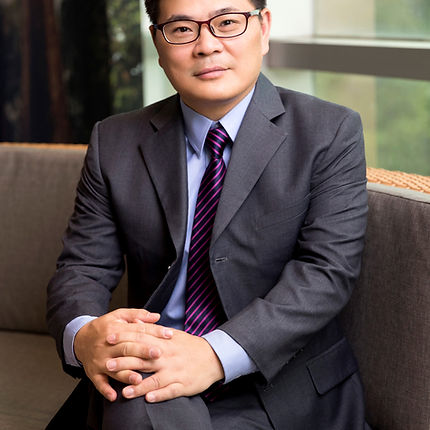


Plasmon-Driven Nitrogen Fixation
Prof. Jianfang Wang
Department of Physics, The Chinese University of Hong Kong, Shatin, Hong Kong SAR
E-mail: jfwang@phy.cuhk.edu.hk

Abstract
Plasmonic metal nanoparticles can interact strongly with light, efficiently converting light into heat and generating hot charge carriers. Plasmonic hot charge carriers can not only enhance reaction yields and selectivity, but also introduce new reaction pathways. We have developed different approaches to improve the utilization of plasmonic hot charge carriers and applied them to artificial nitrogen photofixation. First, Au nanoparticles are anchored on ultrathin TiO2 nanosheets with oxygen vacancies. The oxygen vacancies chemisorb and activate N2 molecules, which are subsequently reduced to ammonia by hot electrons generated from plasmon excitation of the Au nanoparticles. Second, Au nanoparticles are uniformly embedded in the mesopores of nitrogen-deficient hollow carbon nitride spheres for efficient nitrogen photofixation. Third, the photodriven disproportionation of nitrogen is realized in water under visible light and ambient conditions using Fe-doped TiO2 microspheres. Fourth, Schottky-barrier-free plasmonic photocatalysts have been developed out of MoO3-x for N2 photofixation. Such photocatalysts exhibit apparent quantum efficiencies above 1% above 1000 nm. A record-high solar-to-chemical-conversion efficiency has been achieved.
References
1. J. H. Yang, Y. Z. Guo, R. B. Jiang, F. Qin, H. Zhang, W. Z. Lu, J. F. Wang, J. C. Yu, J. Am. Chem. Soc. 2018, 140, 8497-8508.
2. Y. Z. Guo, J. H. Yang, D. H. Wu, H. Y. Bai, Z. Yang, J. F. Wang, B. C. Yang, J. Mater. Chem. A 2020, 8, 16218-16231.
3. J. H. Yang, H. Y. Bai, Y. Z. Guo, H. Zhang, R. B. Jiang, B. C. Yang, J. F. Wang, J. C. Yu, Angew. Chem. Int. Ed. 2021, 60, 927-936.
4. B. B. Chang, Y. Z. Guo, D. H. Wu, L. Li, B. C. Yang, J. F. Wang, Chem. Sci. 2021, 12, 11213-11224.
5. H. Y. Bai, S. H. Lam, J. H. Yang, X. Z. Cheng, S. S. Li, R. B. Jiang, L. Shao, J. F. Wang, Adv. Mater. 2022, 34, 2104226.
Biography
Jianfang Wang obtained his BS degree in inorganic chemistry and software design in 1993 from the University of Science and Technology of China, his MS degree in inorganic chemistry in 1996 from Peking University, and his PhD degree in physical chemistry in 2002 from Harvard University. He did postdoctoral study in the University of California, Santa Barbara from 2002 to 2005. He then joined the Department of Physics of The Chinese University of Hong Kong as an assistant professor in 2005, becoming an associate professor in 2011 and a full professor in 2015 there. His current research interests include colloidal metal nanocrystals, nanoplasmonics, nanophotonics, photocatalysis, and dielectric nanostructures. He has published ~260 papers with a total number of citations ~29740 and an h-index 81 (Web of Science). He served as the Assistant Dean (Education) of Faculty of Science of CUHK from August 2015 to July 2021. He has been the Chairperson of the Department of Physics of CUHK since August 2021.